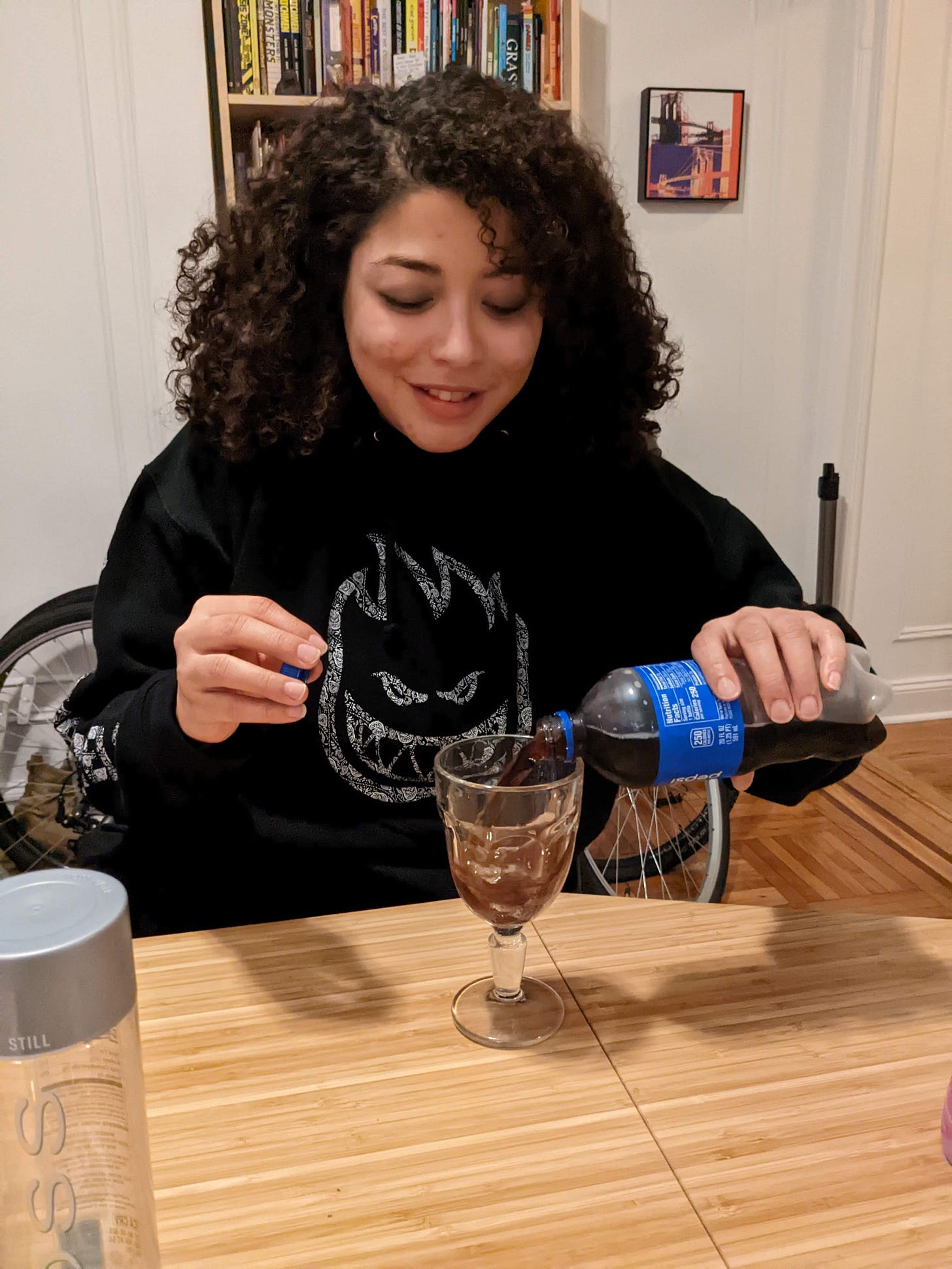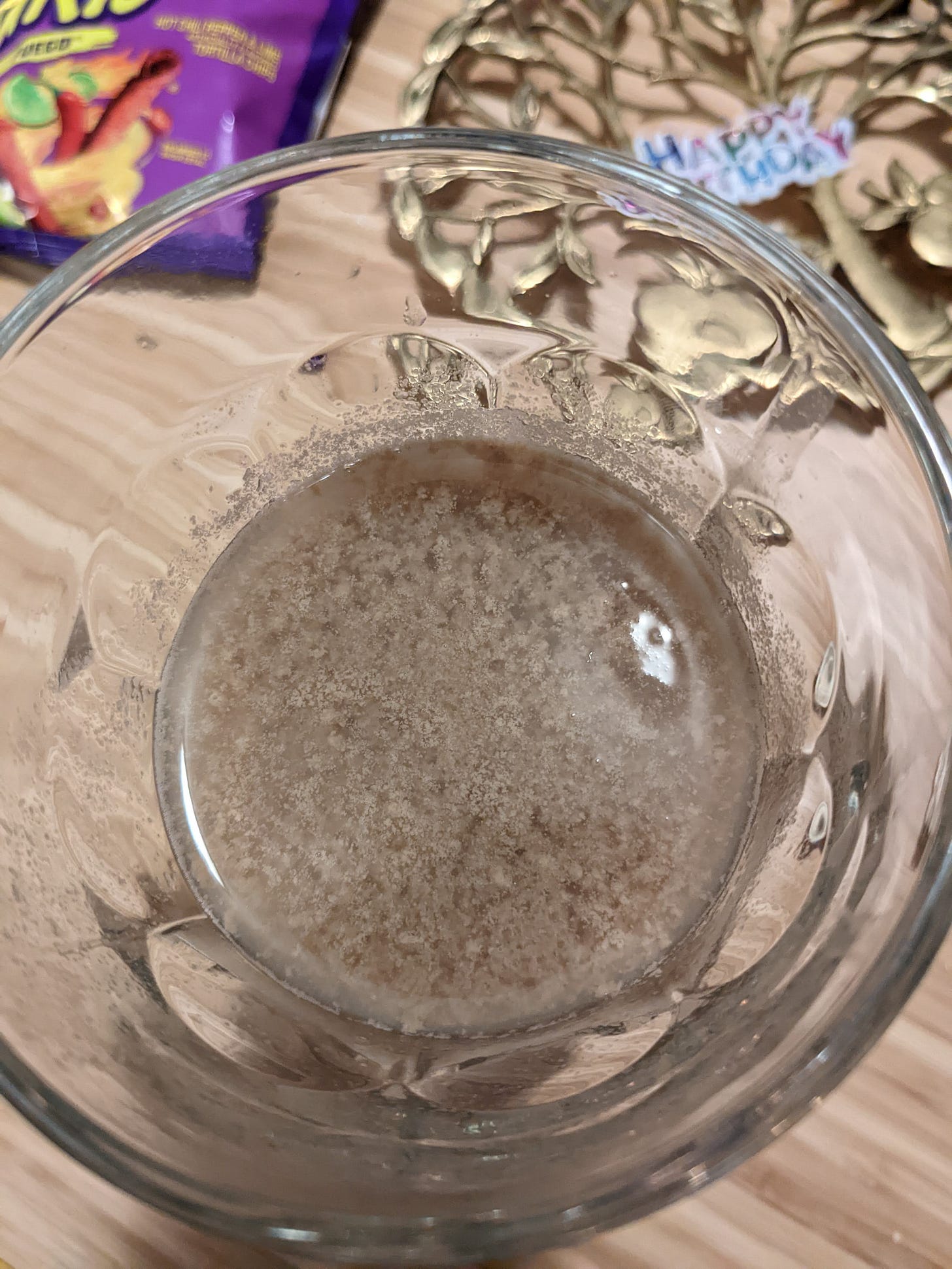When I saw this ad, winking at the viewer in saucy glee, my first thought was, “Who is responsible for this?”
Sure, I wanted to know what it tasted like and immediately bought a Pepsi to check, but it seemed like the commercial knew not everyone would feel the same. Why is this company’s holiday marketing strategy to dare its customers to try a “dirty” concoction? Why do I feel that lately we as customers are being subjected to a barrage of shocking foods, each more heinous than the last? Who greenlit pilk??
I leafed through a few brisk reads on Google like they were archealogical ruins for the answer. Through my haphazard research, I found that pilk is not a new invention made by some deranged Pepsi marketing consultant. From what I know, it has been around.
According to Know Your Meme, the internet’s interest in pilk started from this tweet in 2020. Far earlier than that, an episode of Laverne & Shirley is credited with one of the earliest broadcasts of pilk, with Laverne drinking it out of a bucket somewhere around 1976. Since then, pilk has come up online every few years. (Interestingly, “what is pilk drink” was a very popular question in 2004 according to Google trends, and just “pilk” as a search term peaked when the meme got popular in 2021.)
So pilk isn’t all that new. Embarassingly, it’s something we’ve been doing on our own without PepsiCo’s help.
Until a few days ago I had never had pilk, but I’d like to introduce another hard sell I consider to be pilk’s grandpa—Hot Dr. Pepper.
Have you heard of Hot Dr. Pepper? You heat up a can of Dr. Pepper in a saucepan or microwave, and then put a slice of lemon on top. Hot Dr. Pepper is often brought up in gross-out contexts, an artifact of the olden days of spam sandwiches and ham jello. However, each time it is mentioned, there is always a cheeky revelation that it’s actually delicious.
The story of hot Dr. Pepper, according to The Dr. Pepper Museum in Texas, is that a salesman in 1958 suggested it to the brand’s president, Wesby Parker, who then took a liking to the idea and in some accounts claimed it as his own. The taste is akin to a virgin mulled wine, with the soda’s fruity flavors standing up to the heat. It’s just a warm sugary drink. So why is it a surprise every time someone likes it, and why do we still make it long after Dr. Pepper stopped marketing the recipe?
How about this one: Beef Tea. It’s exactly what it fucking sounds like—a cut of beef boiled in water, then the water is strained into a glass. In one account written by a woman in 1988 recalling her childhood, she describes it as “pure essence of beef, perfectly digestible and nourishing.”
Something special and also uncomfortable comes together to form these unsettling winter drinks. Yes, they’re a bit off, and spark joy into a curious mind just by existing. They also can represent a frustrating lack of choice when it comes to what foods you’re forced to see and interact with in stores. Not only could Hot Dr. Pepper and Beef Tea be seen as a sad reminder of a lack of creative options in the kitchen, but we know that their manufacturers tend to make it so. I can’t control how often I come across Hot Cheetos flavored macaroni and cheese, because Kraft owns most foods I have to buy, and like a crazed medieval king they choose to inflict their experiments on me, a peasant trying to buy rigatoni. Sometimes, the products these monopolies put out make me feel the slightest shade of insulted.* Will I really eat whatever they serve because I have no other choice?
*To understand what I’m talking about, please watch this SNL sketch from deep in the pandemic lockdown when no one knew how to make TV. It never fails to make my cry laughing.
And yet, despite the odds stacked against them, these concoctions defy expectations. Somehow, they taste good. Not because they have to, but because we’re especially good at finding ways to make things delicious. People have always created elegant things from the ingredients around them, even if they’re Dr. Pepper.
Coquito is a holiday drink typical to most Latine households. Its origins are in Puerto Rico, but Colombian, Venezuelan, and Argentinian households alike make it. Growing up, my aunt would slip glass bottles of homemade coquito spiked with aguardiente into the fridge before celebrating Christmas Eve. I’d look into the bottom shelf of the fridge door at the milky liquid, teeming with ground nutmeg and separating by the second. At the time, I didn’t know it was a tradition. I just thought it was some random shit my aunt cobbled together that tasted great from a shot glass under the table.
Now, Bacardi makes its own version, something they might sell back to Puerto Ricans or to audiences completely new to the riches of coquito. Someone in a store coming across the product for the first time might think that leche de coco, evaporated milk, nutmeg, and Bacardi is sort of a chaotic combo. But to me, it recalls homebrewed excellence, created with what Latin American kitchen always happen to have on hand.
Things like Hot Dr. Pepper, pilk, and other holiday beverages have been made by people for as long as the ingredients have existed. If something is out there, someone will see something in it enough to add it to a recipe. And all too often, people originate the drink before it’s ever marketed en masse. What’s so different about heating up Dr. Pepper vs. Jameson and apple cider? Maybe these once-static puzzle pieces have sparked a new, stranger form of creativity that forms the post-internet meme foods we’ve all secretly grown to love. Maybe someone will someday make a Bacardi coquito smoothie, or a Dr. Pepper salad, and it’ll be great.
It was Saturday when my friend said they had pilk before, when they were in Puerto Rico around 2004.
“It was good. It’s like, a thing your tías would give you as a little treat.”
To verify, we went to the corner store and bought some Pepsi.
The flavor washes down your throat with a surprising smoothness. The milk mellows out Pepsi’s sharp bubbles, and dilutes the syrupy sweetness. It tastes like the best part of a root beer float, without having to dig through a glob of vanilla ice cream.
It does get chunky after a few minutes. If you read the pilk post at the top, you’ll realize that within the shitpost, there is truth. These posters actually are familiar with pilk, because they describe the exact textural process my pilk went through with shudderingly accurate detail.
As my friend put it, “You’re supposed to just drink it. Don’t wait.”
We tried a variation with Pepsi Mango, which I didn’t like (a little too sweet) but was worth tasting. Now, my mind races at night with other options and tweaks. What about Pepsi cherry? What about almond milk?
The magic of pilk is that it spells out a future where snack foods and drinks, meticulously crafted with dozens of ingredients, can start a new life as a single ingredient, and mixed anew. And people will continue to craft and memorialize near infinite combinations. Pilk is not a sentence. It’s not even a proposal. It’s a dialogue. Will we respond?











